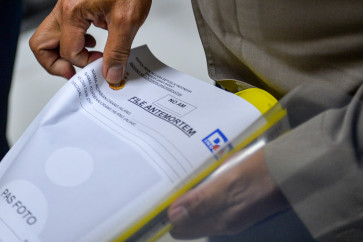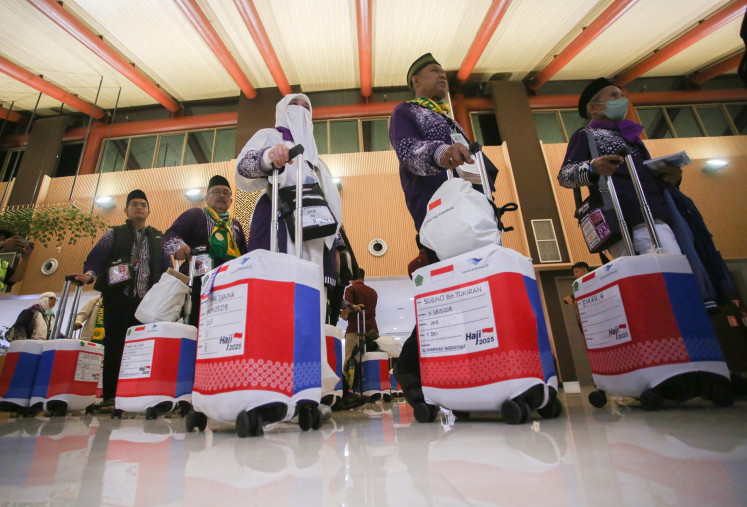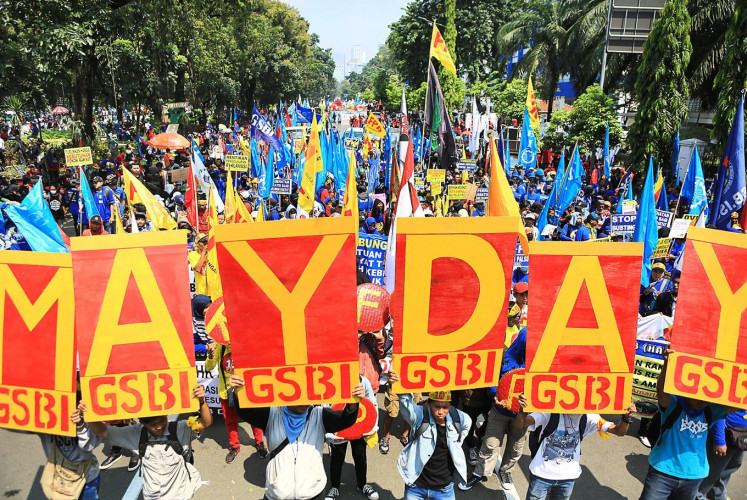Balada Si Roy: Teen angst and the problematic 1980s
The cast and the director of the Indonesian teen-drama Balada Si Roy had a sit-down with The Jakarta Post to discuss the film's intricacy and the importance of telling a story about an antihero.
Change text size
Gift Premium Articles
to Anyone
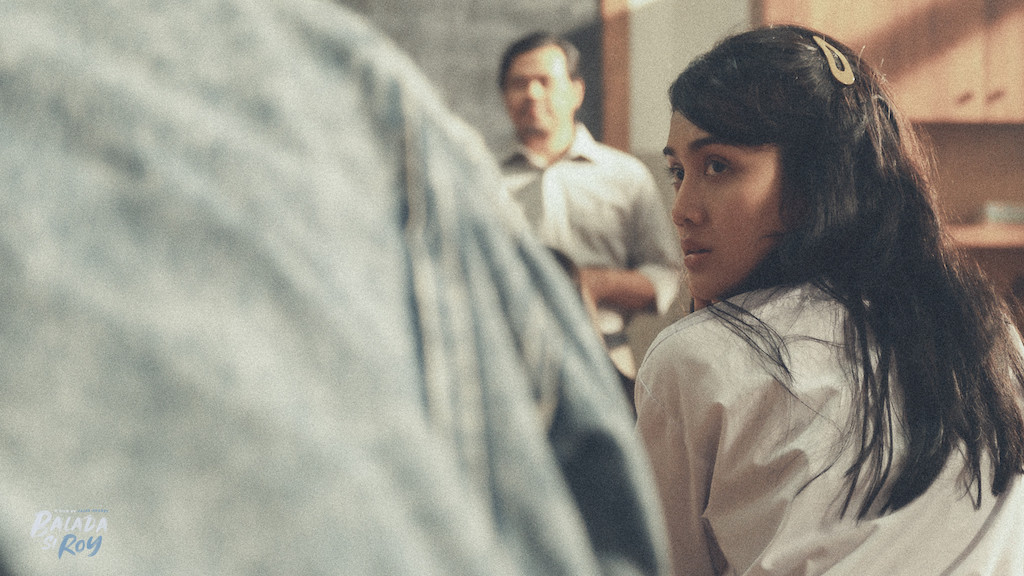
After seeing its premiere at last October's Jakarta Film Week, the Indonesian teen drama Balada Si Roy finally delighted cinephiles by gracing nationwide theaters on Jan. 19. Adapted from Indonesian author Gol A. Gong's running story and a novel series of the same name, its first volume published in 1989, the film was directed by Fajar Nugros, whose directorial credits include the 2017's Moammar Emka's Jakarta Undercover and 2019's MeloDylan.
Emerging-actor Abidzar Al-ghifari (Jingga dan Senja) assumes the titular protagonist, marking the role his debut as a cinematic leading man. Rounding the supporting cast is, to name a few, Omara Esteghlal (Like & Share), Jourdy Pranata (Kukira Kau Rumah), Febby Rastanty (Something in Between), Sitha Marino (IPA & IPS), Zulfa Maharani (Bebas), Bio One (Father & Son) and Lulu Tobing (Two Blue Stripes). The film's screenplay was written by Citra Award-winner Salman Aristo (Athirah) and produced under the banner of IDN Pictures.
New home, new battles
Set in the 1980s, after the death of his father, Roy (Abidzar Al-ghifari) and his mother (Lulu Tobing) struggle to make ends meet and, therefore, decide to move from their hometown Bandung, West Java, to Serang, Banten. Passionate but wayward, Roy immediately makes a big impression at his new school, in no small part thanks to his dog, Joe, that always stays by his side wherever he goes. He also attracts the fairer sex after getting to know Ani (Febby Rastanty), Dewi (Sitha Marino) and Wiwik (Zulfa Maharani).
Unfortunately, the presence of the school's delinquent Dullah (Bio One) and his rag-tag gang named "Borsalino" offends Roy's sense of justice. With his two new friends, Andi (Jourdy Pranata) and Toni (Omara Esteghlal), Roy forms his gang named "RAT" and openly opposes the violent and oppressive "Borsalino". Meanwhile, Roy's rebellious streak further tests his relationship with his mother.
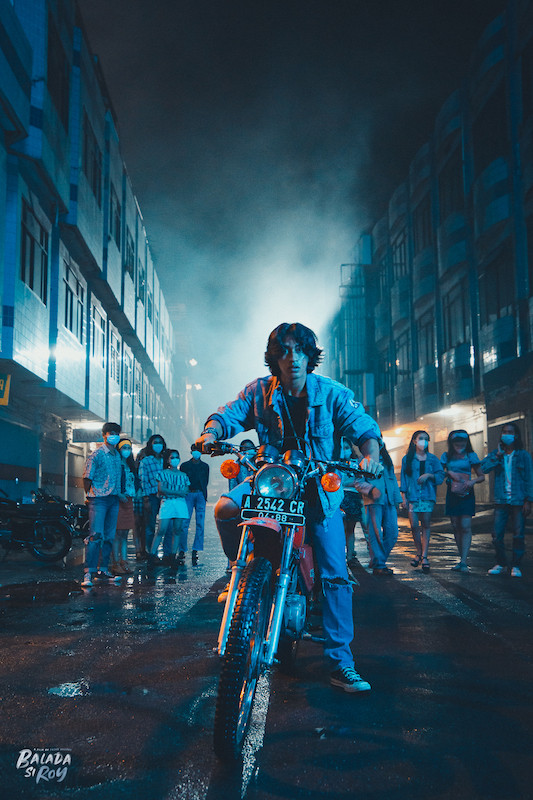
Right people, wrong era
Abidzar read the first volume of the source material to further understand Roy's psyche in preparing for his role. He concluded: "I see Roy takes a lot after his [late] father. And he's a fervent believer in freedom," said Abidzar to The Jakarta Post on Jan. 18.
Abidzar also understood how Roy, unlike most male leads in teen-drama films, could easily fall into the antihero category based on how his character perceives the opposite gender and is not above using violence to settle his issues with the film's antagonist. Nonetheless, he believed that, as an actor, he should not judge his character, at least during the principal photography.
"When I became Roy and went through what he felt, I came to understand why those things happened and why he did what he did," he continued.
The friendship that Roy forges with Andi and Toni also bears its intricacy. The bond between the three characters is centered on Roy and, therefore, not necessarily a balanced one. Unlike Abidzar, Omara did, at a certain point, harbor his judgment against his character, Toni.
"It's true, Andi and Toni seem to be overly dependent on Roy," said Omara. "Nothing about Andi's and Toni's lives that, in this film, significantly transforms the structure of Serang. That means, yes, there is an [imbalance]. Let's say we pluck out Toni and put in someone else. Would that change everything? No."
Omara believed that Toni's feebleness rings true to what most Indonesian youth experienced in the 80s.
"Andi and Toni actually represent those with an inner struggle, a resentment toward oppression. And, they have no power [to fight] because they're not the outsiders. There is no such thing as an 'indifferent' universe for them. And, since Roy [being an outsider] has nothing to lose, the universe does not affect him," explained Omara.
In Zulfa's case, she had been keen on tackling the role of Wiwik from day one, even though the character Ani would serve as the main heroine in the film. Unlike the demure Ani and the carefree Dewi, the character Wiwik is presented as bold and self-assertive, qualities that would later affront Roy.
Zulfa explained that she was "vastly fascinated" by her "powerful" character.
"Wiwik was born in the wrong era," she elaborated. "I see how so many women are out there who are bold and speak their minds. Perhaps, Roy is pissed off [at Wiwik] because he's used to being the 'chaser'. He loves the challenge. But when he encounters Wiwik, he doesn't get that adrenaline rush. That's my perspective as Wiwik."
'Tricky' humans
Considering the film's time setting and the grey area that makes up the characters, Jourdy concurred that the audience's prudence would be essential. As an actor, he believed that Balada Si Roy is a "human" and "relatable" story.
"This film might be a bit tricky for the audience," he said, "but through its story, we could educate them. Hopefully, they could take the good lessons and come up with the best conclusion."
Did the cast think that the modern Indonesian cinephiles were ready for the complexity of Balada Si Roy?
"If you go to the [theater] empty-minded, yes, [that means] you are ready," answered Omara.
Abidzar also believed that antiheroes like Roy could make for a more-poignant protagonist.
"At the end of the day, being an antihero is about winning and losing simultaneously," he opined, "getting neither too high nor too low; it's settled in the middle. I think that's important. Why? Because a [character] who is strictly supreme or inferior is not a balanced one."
Director's thoughts
Fajar Nugros was convinced of the potential of Balada Si Roy as a feature film due to how the novel series inspired him as a filmmaker.
"It inspired me to pursue my dream as a [film] director," he told the Post on Jan. 25. "I think, in this day and age, the younger generation, including my child, needs a sort of role model and compass to guide them. That's why, I think, this story was interesting to be adapted as a film."
As the film's director, Fajar was adamant about the importance of having "awareness" of the "significant gap" in values and social circumstances between Indonesia in the 80s and the present era.
"[That's why] I must adjust the social norms and values as conformed right now and imbue changes about the source material so that the story remains relevant," he continued.
Another element Fajar was aware of is how Roy could come off as "problematic" in the modern age, which, in the novel series, was initially more "rock and roll", he teased.
Nonetheless, he also teased how, in Balada Si Roy, there is more than what meets the eye.
"The duel between Roy and Dullah is actually because of Ani, who 'makes use of' Roy to be free from Dullah's clutch," he said, giving an example. "I think that's a move and [point-of-view] POV made by a mature woman who can make her own decisions. Women are not just Roy's object for his masculinity."
Balada Si Roy is available to watch in theaters.

